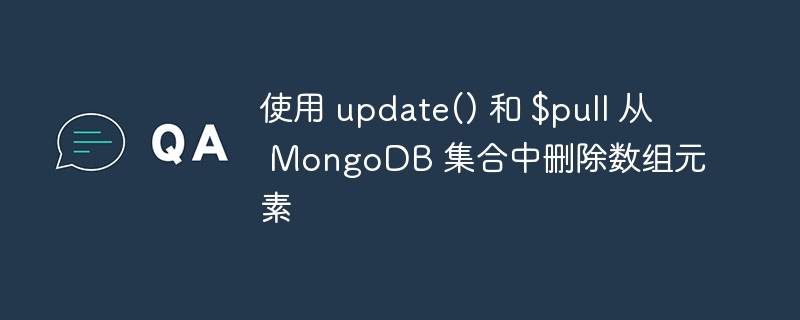
让我们首先创建一个包含文档的集合 -
> db.removingAnArrayElementDemo.insertOne({"UserMessage":["Hi","Hello","Bye"]});
{
"acknowledged" : true,
"insertedId" : ObjectId("5cef97bdef71edecf6a1f6a4")
}借助 find() 方法显示集合中的所有文档 -
> db.removingAnArrayElementDemo.find().pretty();
{
"_id" : ObjectId("5cef97bdef71edecf6a1f6a4"),
"UserMessage" : [
"Hi",
"Hello",
"Bye"
]
}以下是从 MongoDB 中删除数组元素的查询 -
> db.removingAnArrayElementDemo.update(
{_id:ObjectId("5cef97bdef71edecf6a1f6a4")},
{ "$pull": { "UserMessage": "Hello" } }
);
WriteResult({ "nMatched" : 1, "nUpserted" : 0, "nModified" : 1 })让我们再检查一下文档:
> db.removingAnArrayElementDemo.find().pretty();
{
.
"_id" : ObjectId("5cef97bdef71edecf6a1f6a4"),
"UserMessage" : [
"Hi",
"Bye"
]
}以上就是使用 update() 和 $pull 从 MongoDB 集合中删除数组元素的详细内容,更多请关注php中文网其它相关文章!

每个人都需要一台速度更快、更稳定的 PC。随着时间的推移,垃圾文件、旧注册表数据和不必要的后台进程会占用资源并降低性能。幸运的是,许多工具可以让 Windows 保持平稳运行。

Copyright 2014-2025 https://www.php.cn/ All Rights Reserved | php.cn | 湘ICP备2023035733号